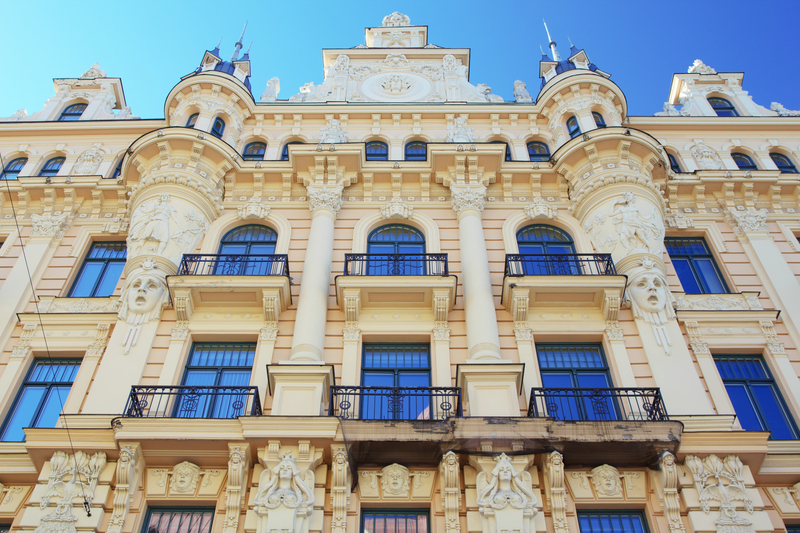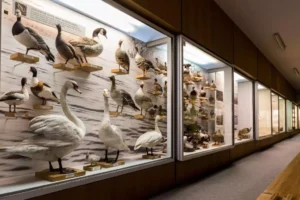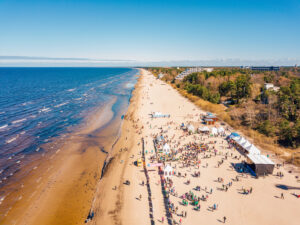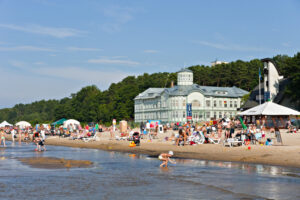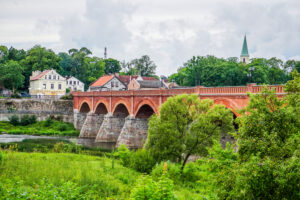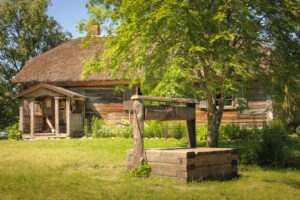Riga, the capital city of Latvia, is known for its stunning architecture. One particular style that stands out is Art Nouveau, which flourished in the late 19th and early 20th centuries. Riga boasts the largest collection of Art Nouveau buildings in the world, with over 800 examples scattered throughout the city. In this blog post, we will explore Riga’s architectural marvels and delve into the history and significance of Art Nouveau.
Art Nouveau, also known as Jugendstil or Modernism, emerged as a reaction against the industrialization and mass production of the late 19th century. It sought to bring art into every aspect of life, from architecture to furniture, jewelry, and even clothing. The movement emphasized organic forms, intricate details, and a harmonious integration of art and nature.
Riga’s love affair with Art Nouveau began in the late 19th century when the city experienced a period of rapid growth and prosperity. The influx of wealth allowed for the construction of grand buildings, and many architects embraced the new style. The most prolific of these architects was Mikhail Eisenstein, who designed over 50 Art Nouveau buildings in Riga.
One of the most iconic Art Nouveau buildings in Riga is the House of the Blackheads. Originally built in the 14th century, it was reconstructed in the early 20th century in the Art Nouveau style. The facade is adorned with intricate sculptures and ornamental details, showcasing the movement’s emphasis on craftsmanship and attention to detail.
Another notable example is the Riga Art Nouveau Museum, located in a building designed by Konstantīns Pēkšēns, one of Latvia’s most renowned Art Nouveau architects. The museum offers visitors a glimpse into the history and development of the Art Nouveau movement in Riga, with its collection of furniture, decorative objects, and architectural drawings.
Walking through the streets of Riga, it is impossible to miss the numerous Art Nouveau buildings that line the city’s boulevards. Elizabetes Street and Alberta Street are particularly famous for their concentration of Art Nouveau architecture. The facades of these buildings are adorned with intricate floral motifs, mythical creatures, and whimsical details, creating a visual feast for the eyes.
One of the reasons why Riga became a hub for Art Nouveau architecture was the city’s unique blend of cultures. At the turn of the 20th century, Riga was a melting pot of different ethnicities, including Latvians, Germans, Russians, and Jews. This cultural diversity influenced the city’s architecture, resulting in a fusion of different styles and influences.
Art Nouveau in Riga also had a social and political significance. The movement was embraced by the Latvian intelligentsia as a symbol of national identity and cultural independence. It represented a break from the traditional architectural styles associated with the ruling German elite and a celebration of Latvian heritage.
Unfortunately, during the Soviet era, many Art Nouveau buildings fell into disrepair or were neglected. However, in recent years, there has been a renewed interest in preserving and restoring these architectural gems. The Riga Art Nouveau Center, established in 2009, aims to promote and protect the city’s Art Nouveau heritage through education and advocacy.
Today, Riga’s Art Nouveau buildings are not only admired by locals but also attract tourists from around the world. The city has become a popular destination for architecture enthusiasts, who come to marvel at the intricate facades and explore the rich history of the Art Nouveau movement.
In conclusion, Riga’s architectural marvels are a testament to the city’s rich cultural heritage and its embrace of the Art Nouveau movement. The city’s collection of over 800 Art Nouveau buildings is a sight to behold, with their intricate details and whimsical designs. Exploring Riga’s Art Nouveau architecture is like stepping back in time and experiencing the creativity and craftsmanship of a bygone era. Whether you are an architecture enthusiast or simply appreciate beauty, a visit to Riga’s Art Nouveau district is a must.

